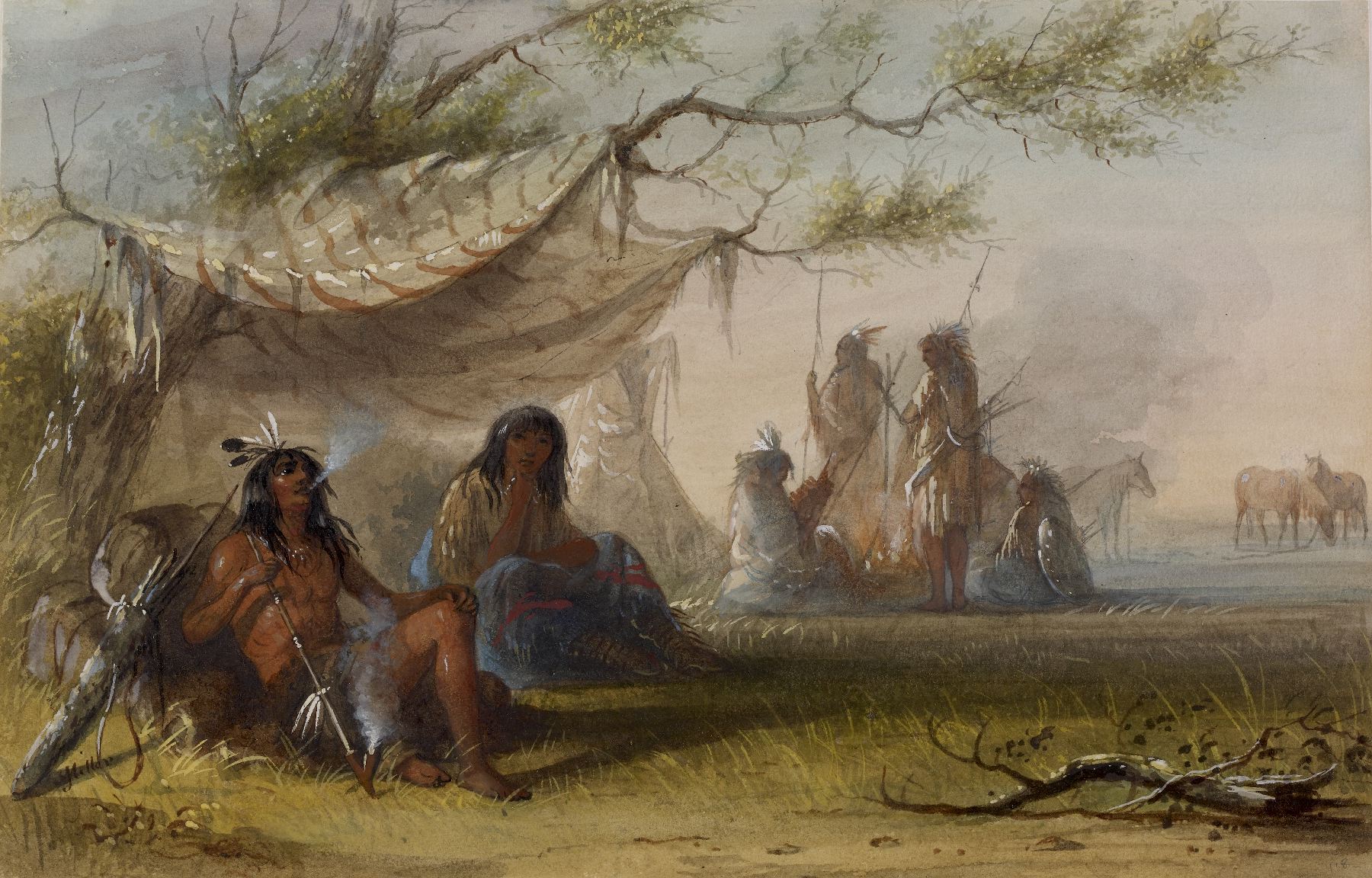Indian Encampment
(18th and 19th Centuries )
Extracts from Alfred Jacob Miller’s original text, which accompanied his images of Native Americans, are included below for reference. These words, which shaped how Miller’s contemporaries viewed the watercolors, reveal the racism and sexism embedded in 19th-century exploration and colonization of the western part of what is today the United States.
"Reclining against his Beaver and Buffalo packs the warrior is enjoying his dolce far niente while smoking his calumet. If disposed to be ceremonious, he throws his first two whiffs upward, muttering some words between;- the next in a similar manner towards the ground. Sometimes he varies the ceremony by merely throwing the stem upward, and then commencing to inhale (by way of variety), he exudes the smoke alternately - now through his nostrils, and again from his mouth, the fragrant fumes encircling above his head in a small cloud. At a little distance (screened from the sun by a blanket) is seated his mild and patient help mate, ready to receive his imperial orders and execute them with cheerfulness, and on the broad prairie beyond, his vassals encircle the campfire, roasting their meat, and all agog for any foray their pugnacious leaders may hit upon,- never in any case, you may be sure, for the benefit of his neighbors." A.J. Miller, extracted from "The West of Alfred Jacob Miller" (1837).
In July 1858 William T. Walters commissioned 200 watercolors at twelve dollars apiece from Baltimore born artist Alfred Jacob Miller. These paintings were each accompanied by a descriptive text, and were delivered in installments over the next twenty-one months and ultimately were bound in three albums. Transcriptions of field-sketches drawn during the 1837 expedition that Miller had undertaken to the annual fur-trader's rendezvous in the Green River Valley (in what is now western Wyoming), these watercolors are a unique record of the closing years of the western fur trade.
Provenance
Provenance (from the French provenir, 'to come from/forth') is the chronology of the ownership, custody, or location of a historical object. Learn more about provenance at the Walters.
William T. Walters, Baltimore, 1858-1860, by commission; Henry Walters, Baltimore, 1894, by inheritance; Walters Art Museum, 1931, by bequest.
Geographies
USA (Place of Origin)
Measurements
8 5/8 x 13 in. (21.9 x 33 cm)
Credit Line
Commissioned by William T. Walters, 1858-1860
Location in Museum
Not on view
Accession Number
In libraries, galleries, museums, and archives, an accession number is a unique identifier assigned to each object in the collection.
In libraries, galleries, museums, and archives, an accession number is a unique identifier assigned to each object in the collection.
37.1940.115



